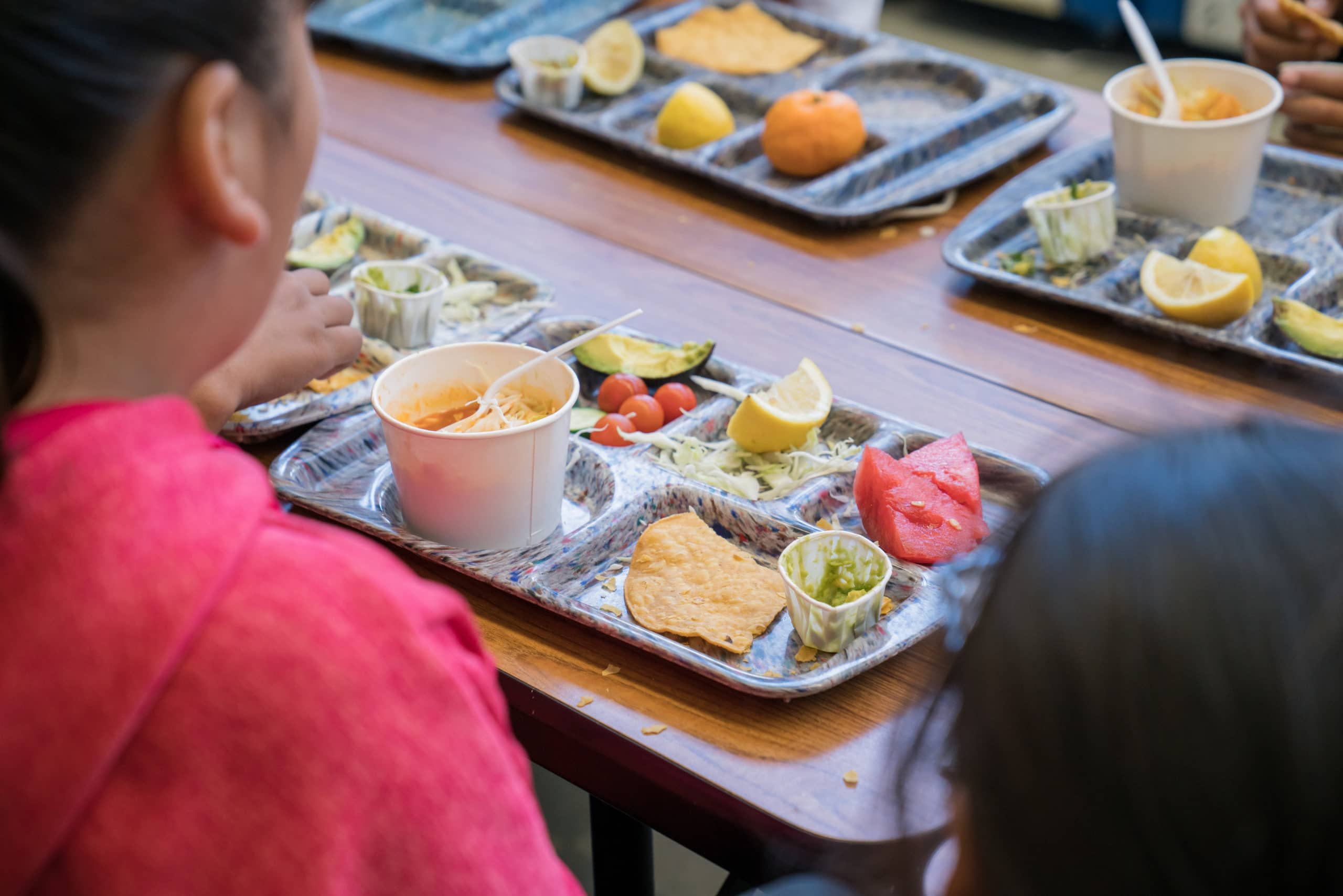What is the National School Lunch Program?
Inside the program that feeds millions of kids every day.
Help nourish students’ minds, bodies, and hearts this holiday season!
Inside the program that feeds millions of kids every day.

Have you ever wondered how schools manage to feed hundreds or even thousands of kids every day? It’s a huge feat—one that’s possible because of the National School Lunch Program (NSLP).
Now almost 80 years old, the NSLP is the federal program that helps schools get what they need to feed their students. Want to learn more about how this program works? Keep reading for some frequently asked questions and answers about the NSLP.
The NSLP is a federal program that provides nutritious, low-cost meals to children each school day. The NSLP has been around since 1946, when President Harry S. Truman signed the National School Lunch Act as a means of improving child nutrition. “In the long view, no nation is any healthier than its children or more prosperous than its farmers,” the president wrote. “And in the National School Lunch Act, the Congress has contributed immeasurably both to the welfare of our farmers and the health of our children.” Today, about 30 million students in nearly 100,000 public and nonprofit private schools get their daily meals from the NSLP.
Participating in the NSLP is voluntary, which means public or nonprofit schools may agree to opt in. Under the NSLP, schools or districts receive a cash reimbursement for each meal they serve. Meals must meet a set of federal requirements and be available for free or a reduced price to eligible children, based on their household income. School nutrition professionals must also complete a series of administrative steps, like tracking the number of meals served and students’ free school meal eligibility.
Yes, to an extent. Meals reimbursed through the NSLP must meet a broad set of federal nutrition requirements, such as offering whole grains and fruits and vegetables, that resemble the federal Dietary Guidelines for Americans. The most recent school nutrition standards also impose limits on sodium and added sugars, though these requirements are being phased in over time. However, local school districts can decide what foods to purchase and how to prepare them, depending on the funding and equipment available to them. This is why local procurement and school kitchen modernization are so important!
Kids are eligible for free or reduced-price school meals if their family household income falls below a certain threshold, if their family receives EBT benefits, if they are in foster care or the Head Start program, or a number of other factors. The best way to learn if your kids are eligible is to contact your local school, which may have you fill out an application for free or reduced-price meals.
To learn more, visit the USDA website or contact the school nutrition officials in your state.
Eager to support school meals? Take action! Visit our School Food Policy Action Map to learn if your state offers free school meals to all kids, regardless of income.
Related read: USDA’s Proposed Rule for School Meals Shines a Light on Local | “FoodCorps works with countless school nutrition professionals who are innovative and resourceful when it comes to serving delicious, culturally relevant meals. These staff work within a complex set of rules and guidelines just to purchase the supplies and ingredients they need to feed our children. Buying food directly from local farmers and suppliers has many benefits, including more reliability and fewer supply chain disruptions (even during COVID). Purchasing directly from producers also keeps food dollars in the community, stimulating the local economy.”

Our 2025 Child Nutrition Policy Year in Review

Winterizing Your School Garden

5 Awesome Small Businesses by FoodCorps Alums